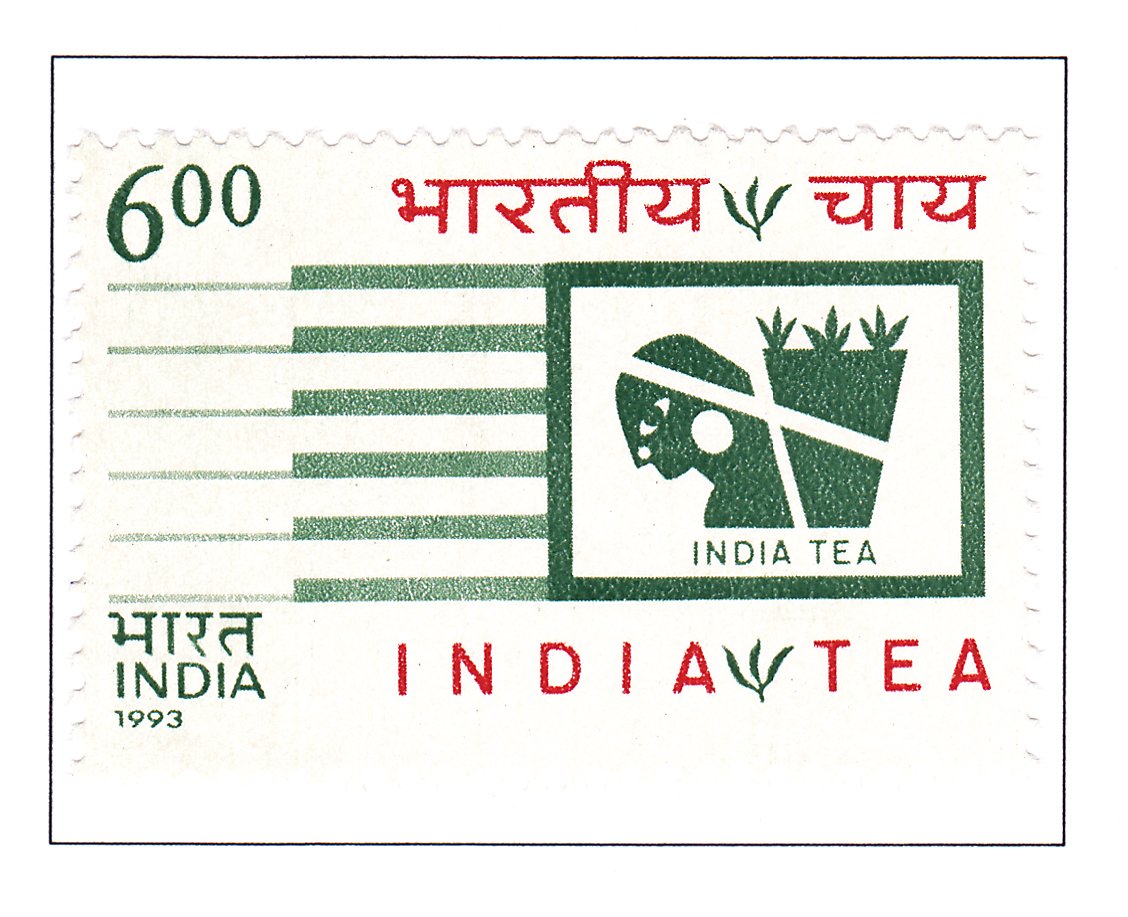Indian Tea Production

Technical Data
| Date of Issue | December 11, 1993 |
|---|---|
| Denomination | Rs. 6 |
| Quantity | 1,000,000 |
| Perforation | comb 13 |
| Printer | Security Printing Press, Nashik |
| Watermark | No Watermark |
| Colors | Multicolor |
| Catalog Codes |
Michel IN 1407 Stamp Number IN 1464 Yvert et Tellier IN 1205 Stanley Gibbons IN 1557 |
| Themes | Symbols | Tea |
Table of Contents
India Tea: Celebrating a Beverage’s Journey and Impact
Historical Background:
- Origins: Tea drinking began in ancient China for its medicinal value, evolving into a popular beverage by the 4th century.
- Cultural Influence: The Japanese developed intricate tea ceremonies. The Tartars, Moghuls, and Tibetans each adapted tea to their unique cultural practices.
- Global Spread: Tea drinking became popular in Europe and England in the mid-17th century. In India, apart from certain tribes in Assam, tea was not widely consumed until introduced by the British.
Tea in India:
- Employment: The tea industry in India employs over a million workers across estates in northeast and south India, supporting numerous ancillary and support services.
- Economic Impact: Tea estates, located in industrially backward areas, play a crucial role in supporting local tribal communities. The industry is a significant foreign exchange earner, generating around Rs. 1200 crores annually, and provides substantial revenue to both central and state governments.
- Infrastructure Development: The establishment of tea estates has contributed to infrastructure development, including roads and railways, in remote parts of India.
Unique Characteristics of Indian Tea:
- Diverse Agro-Climatic Conditions: Indian tea grows in varied conditions, from the snowy peaks of Darjeeling to the sea levels of south Travancore.
- Product Range: Indian tea offers a wide spectrum of products, from traditional black tea to modern convenience beverages like tea bags and instant tea.
Promotion of Indian Tea:
- 1993 Thrust: A specific effort was made in 1993 to promote Indian tea in the global market through trade fairs, buyer-seller meets, and other promotional activities.
Commemorative Stamp:
- Symbolism: The stamp design features a tireless tea picker and the symbol of two leaves and a bud, typical of Indian tea plantations.
- Artistic Elements: The First Day Cover artistically represents Indian tea’s readiness to face global challenges in the 20th century.
Cultural Reference:
- Rabindranath Tagore’s Lines: The stamp and First Day Cover evoke Tagore’s poetic invitation:
“Come oh come
Yea tea-thirsty
Restless ones
The kettle boils
Bubbles and sings
Musically.”
Design Credits:
- The stamp, First Day Cover (FDC), and cancellation designs are based on materials supplied by the Ministry of Commerce.
The commemoration of “India Tea” highlights the beverage’s historical significance, cultural integration, economic impact, and India’s efforts to promote its unique tea varieties on the global stage.
